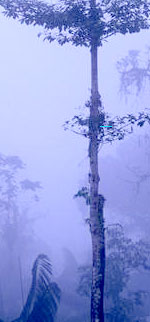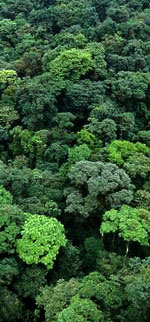|
WORK BEGINS TO RESTORE NATIVE TREES IN THE AWACACHI CORRIDOR, ECUADOR
The Global Trees Campaign has begun work to restore threatened native trees in the Awacachi Biological Corridor in Ecuador. Local people will play a central part in the replanting of threatened native trees, including the Endangered timber species Carapa megistocarpa and Lecythis ampla, which is important for the Endangered Great Green Macaw.
The Awacachi Biological Corridor was established in 2000 and spans 10,000 ha, hosting primary and secondary Chocó forest. The Corridor, purchased for conservation by FFI and managed by local NGO partner Fundación Sirua, links the Cotacachi Cayapas Biological Reserve with the Awá Ethnical Territory. It is one of the last remnants of native Chocó forest, a habitat characterized by high biodiversity and endemism of fauna and flora. In recent years intense logging has left some forested areas in a degraded state and several tree species, particularly native ones, seriously depleted.
In March 2009 the Global Trees Campaign, working with Fundación Sirua, began work to restore five key native species: Carapa megistocarpa, Humiriastrum procerum, Lecythis ampla, Tabebuia guayacan and Tabebuia chrysantha to 40 hectares of the Awacachi Corridor. A key part of this restoration will involve raising awareness in local communities and involving local school children in planting activities. Schools in San Lorenzo, San Francisco and Durango have signed up to the scheme, which will see each student planting and tending at least eight native tree seedlings in school tree nurseries, before visiting the Corridor to plant them out into the wild in late 2009.
Read more about FFI's work in the Awacachi Corridor.
Back to Latest News
|


|



